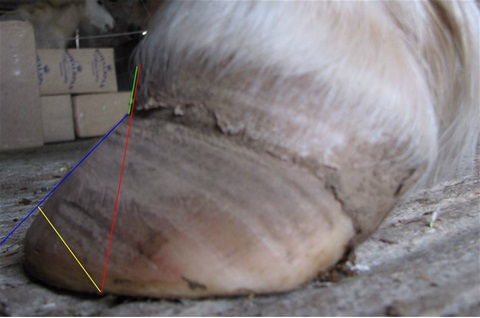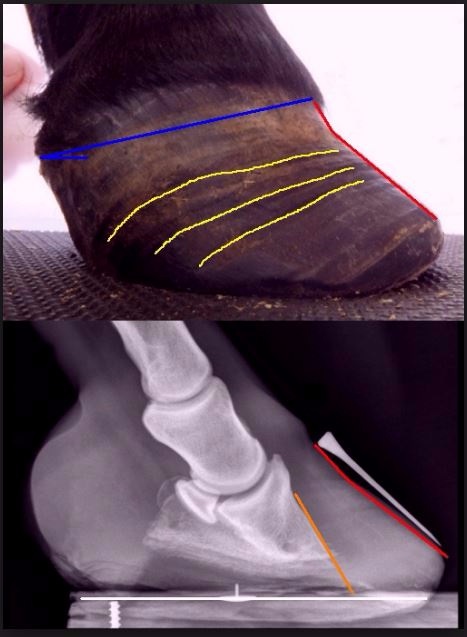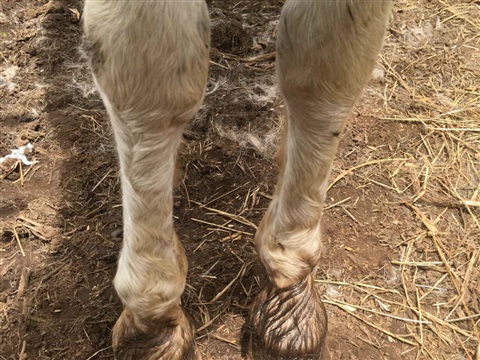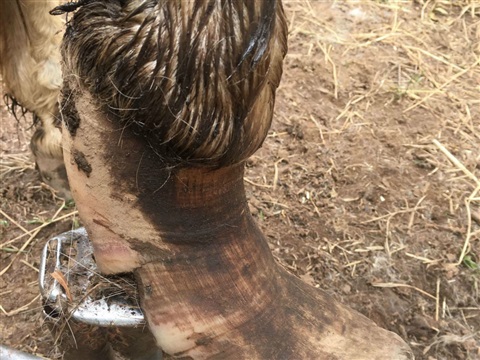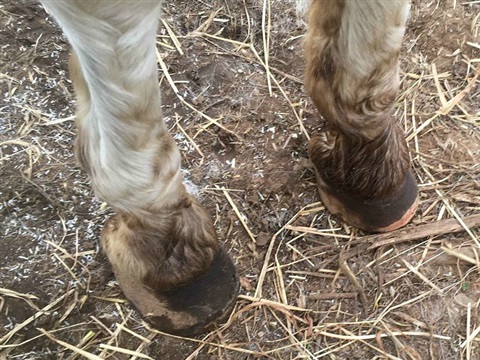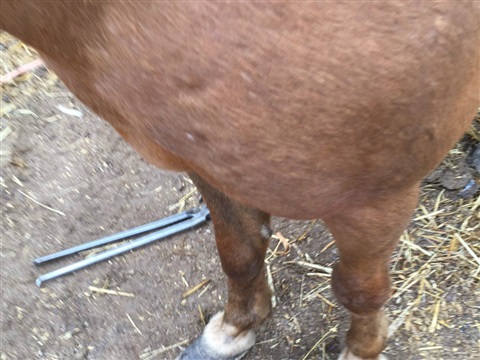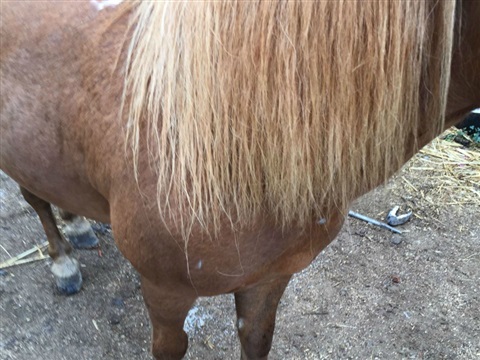Effects of Founder on the Hoof (Laminitis)
Laminitis is defined as inflammation of the laminae leading to degeneration of the union horny and sensitive laminae (Merck Veterinary Manual 2011).
The most common cause of laminitis is increased carbohydrate intake, such as grain overload.
Other triggers include over grazing on lush grass, over exercise of an unfit horse, colic, and endotoxemia. These ailments cause a cascade of events to occur resulting in blood supply to and from the hoof to be shunted (Merck Veterinary Manual 2011).
Laminitis can affect one hoof or all four hooves. Commonly signs of laminitis are observed in the fore hooves. Depending on the severity of the case, laminitis can be classified as acute, sub acute or chronic. “Laminitic rings” are observed in mild cases and in severe cases founder can occur. In cases of chronic laminitis rotation of the coffin can be observed in outward changes of the hoof capsule and confirmed through radiographs. Another sign of laminitis is heat in the hoof, especially near the coronary band. A strong digital pulse can be noted as well (Merck Veterinary Manual 2011).
For a greater understanding of the effects of Laminitis, please visit: The Laminitis Site. or copy and paste this into your web browser - http://www.thelaminitissite.org/laminitis.html
Photos of Laminitis Farrier Services
Click each of the images below to open up the Photo sequence.
Harold demonstrates effective corrective trimming of foundered hooves.
